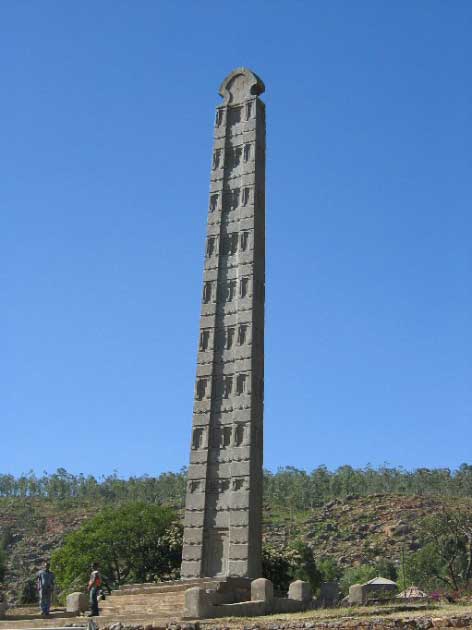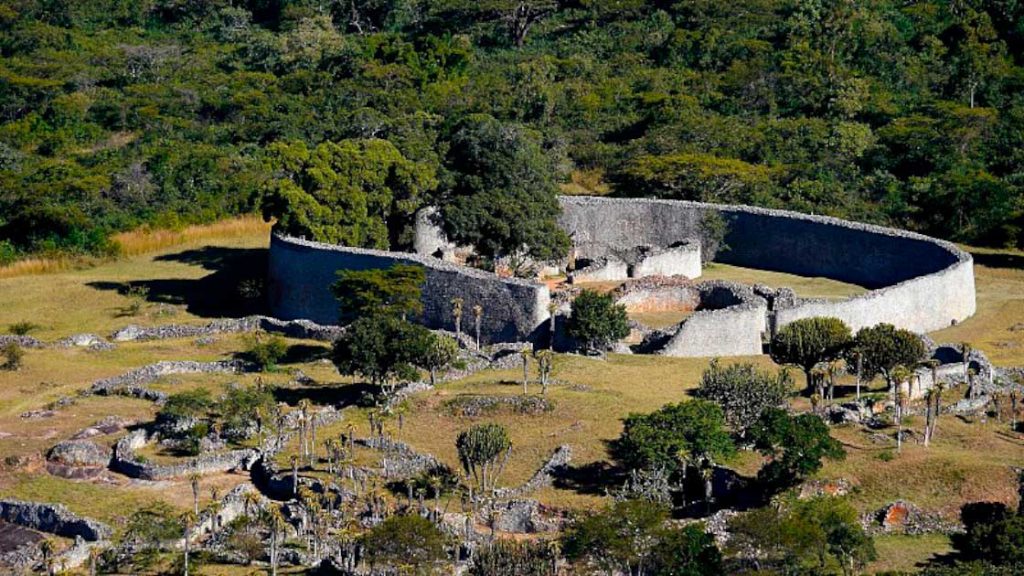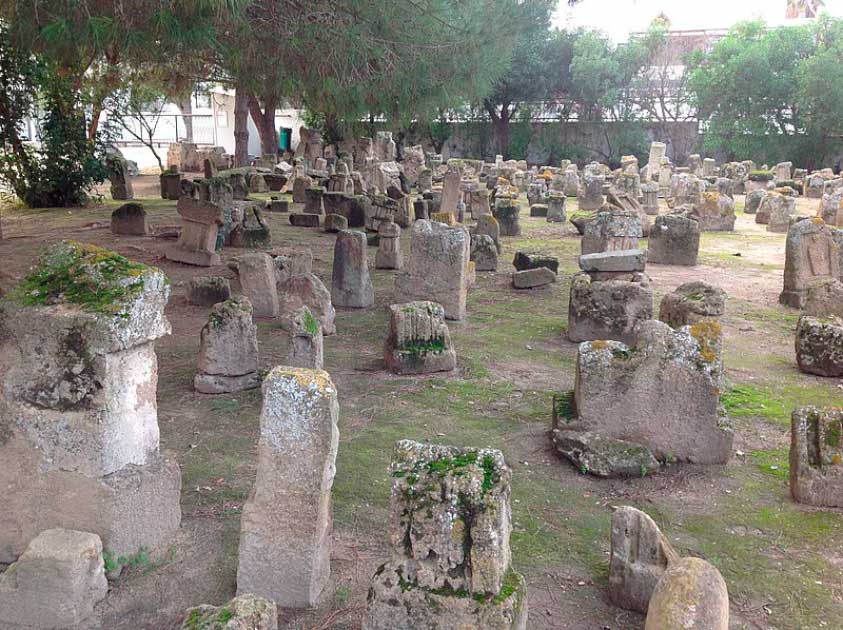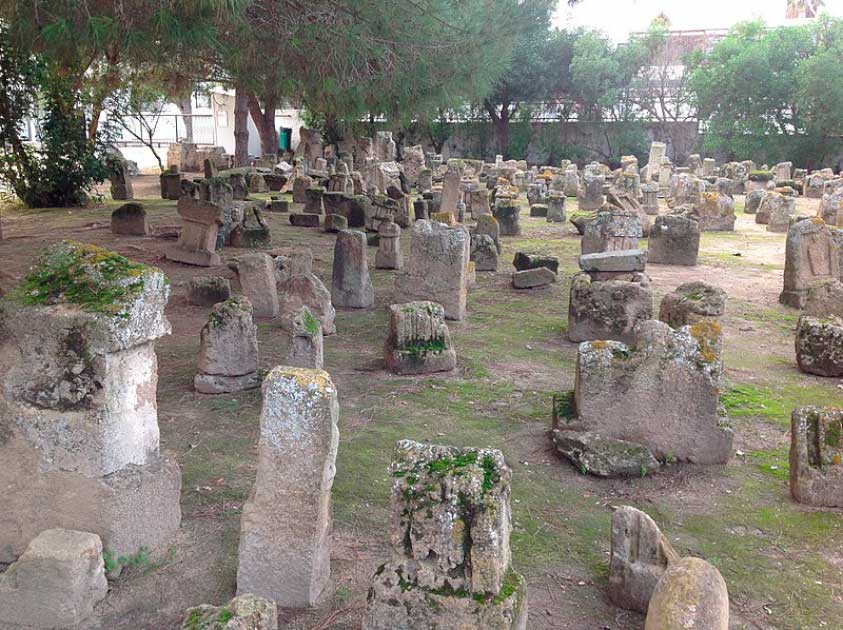Africa is truly enormous, but surprisingly populated. Roughly the same amount of people live in the continent as do in North America and Europe combined, but the total landmass is some 4.5 million square kilometers (1.7 million square miles) smaller.
Yet much of the continent remains empty, with population centers heavily concentrated in three bands, the Mediterranean, the sub-Saharan, and the extreme south. Between these much of the land remains uninhabited, mysterious and home to much we cannot explain.
Strange ruins can be found in the vast plains and jungles of the continent. Strange constructions which defy understanding, and which puzzle us to this day. Who built these structures, these lost cities and confusing, looping fortresses? What silent civilizations survive only in these dusty stones?
Sometimes it can seem that, when it comes to Africa, the Egyptians have the lion’s share of attention, and while this may be justified given their extraordinary and enduring ancient architecture, there are other treasures out there.
Here are eight examples of such oddities.
1. Meroe: The Kushite City of the Nile
It should be said that Egyptian dominance of Africa is not a new phenomenon, and many other civilizations interacted with the pyramid builders. The Nile, source of all life for the Egyptians, extended far to the south of the Egyptian heartlands, and here Egypt faced their only other major land neighbor.

One of the civilizations that rose from the south to threaten Egypt was the Kingdom of Kush. And it was the Kushites, fleeing an ascendant Egypt in the 6th century BC, who built a great city far to the south: Meroe, known to the Greeks as Aethiopia.
Rich resources and fertile lands ensured that this great city flourished, and the Kushites re-established themselves in splendor. Trade routes ranging as far as India and even China brought wealth to the kingdom, and over 200 pyramids would eventually be built at Meroe.
2. The Forgotten City of Djado
The deep central Sahara, in the African country of Niger, is a land almost beyond human reach. Any traveler heading south from the Mediterranean coast is faced with seemingly insurmountable obstacles.
But, for those who penetrate to the harsh interior of the great desert, a seeming miracle waits to be found. Here amid the sand-choked canyons on a high plateau lies the ruins of a great fortified city known as Djado, abandoned to the desert.
- (In Pics) Ten Great Lost Civilizations of Peru that aren’t the Inca
- Mokele-Mbembe: A Dinosaur Hidden in the Jungles of Africa?
The Kanuri people of the mid Saharan desert were the last known inhabitants of this city. But the Kanuri are not known for such monumental construction: they may have inherited a city built far earlier by an unknown culture. Either Djado is unique in the Kanuri culture, or it is even older and more mysterious.
3. Great Zimbabwe
This might be the strangest of them all. Structurally, Great Zimbabwe appears to be a medieval African city near Masvingo in Zimbabwe, with a large conical tower and circular curtain wall, occupied from about 1100 to 1600 AD.

However, the architecture makes little sense compared with contemporary cities, with pathways leading to nowhere and a series of interwoven stone walls and buildings whose purpose remains mysterious. Stretching from the curtain wall across the valley, we can only speculate as to the purpose of some of the structure.
We know that the city was rich, with the wealth of the site was mainly generated through gold and cattle production. But we can say little about the city itself, and with various destructive archaeological mistakes and looting leading to the destruction of the ruins, we have even less chance of understanding it today.
4. The Bakoni Ruins of South Africa
On the hills near Machadodorp in Mpumalanga Province of South Africa, a series of maze-like structures are to be found. Here, among the remote slopes and pastures, lie the Bakoni ruins.
The ruins are believed to be structural remains that were created by the Bakoni people who used to live in that region during the 16th century. However, some believe that the culture is far older, stemming from the time of the “Mitochondria Eve”.
Some identify the stone enclosures as relatively recent, dating them to no more than a few centuries ago. Others, believe the site could be evidence of a far older culture which radically backdates the agricultural revolution in paleolithic humans, suggesting the structures many have been built as much as 250,000 years ago.
5. Adam’s Calendar
If you thought the Bakoni ruins were strange, one site in particular known as “Adam’s Calendar” invites all sorts of wild and unexpected theories. The site, discovered after a plane crash, consists of three monolithic dolomite boulders, standing next to a giant circle made out of stone.
What the pilot had found appeared to be the oldest artificial structure ever discovered. Some theories of the site date its construction to 300,000 years ago, way before any other evidence of human civilization.
Many dismiss both the Bakoni ruins and Adam’s calendar as misunderstood (and recent) animal enclosures. However, the great circle appears to function as a paleolithic calendar in a similar fashion to Stonehenge, and if this is true then the entire landscape of ineteconnected structures may be evidence of a truly ancient peoples, rewriting the history books.
6. Aksum
The 3rd century Persian profit Mani, the founder of Manicheism, identified four great empires in the world. He spoke of Rome, China, Persia, and Aksum.
- Abu Bakr II: Did the King of Ancient Mali go to America?
- King Leopold II: The Biggest Cover-up in European History?
Aksum was based to the south east of Egypt, in the highlands of Tigray in present-day Ethiopia. It also included parts of Eritrea, eastern Sudan and, across the Gulf of Aden, much of modern day Yemen as well.

The kingdom is likely to have been founded during the 1st century AD and flourished from the 3rd to 6th century AD. However, the origins of Aksum, and the even more obscure civilization of D.mt which came before, still remain a mystery.
7. Punt
With Punt, we have the opposite problem to the mysteries surrounding the above ruins. Here we have a well-attested trading partner of Egypt which is almost entirely obscure in the archaeological record.
Most believe that Punt was somewhere in the horn of Africa, with perhaps some Arabian territory as well, approximately the same location as Aksum and D’mt above. However Punt is far older, dating to the 25th century BC, when Egypt first traded with her.
The Egyptians also called Punt “Ta netjer” which means “God’s Land” and many historians have interpreted this to mean that Punt was the original homeland of the Egyptian civilization. However, by the time of the Egyptian New Kingdom between the 16thand 11th centuries BC Punt had become a mythological land, lost to Egypt.
8. The Tophet of Carthage
Carthage, great rival of the Roman Republic, was once a city as great as Rome herself. Destroyed by the victorious Romans over a series of conflicts known as the Punic Wars between 264 and 146 BC, her status as the loser in those conflicts meant much of her culture remains obscure.
One of the aspects of Carthaginian culture which was lost was the Tophet, a sacred site located outside of the city, where young children were buried. It has recently become the subject of historical controversy because ancient texts and evidence found by archaeologists suggest that those found in Carthage were that of child sacrifices.

The Tophet found near the ruins of Carthage has shown no signs so far that it houses any adult graves, and many of the grave stelae are dedicated to Baal and Tanit, the patron gods of Carthage. Roman sources also attest to child sacrifice among the Carthaginians.
But then the Romans would say that about their hated enemy, wouldn’t they?
Top Image: The ruins of Djado in Niger, a huge city which was likely built by a lost civilization. Source: Holger Reineccius / CC BY-SA 2.0 DE.
By Joseph Green